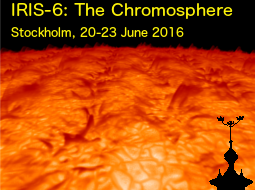Speaker
Antonio Alessandro Cilla
(Max Planck Institute for Solar System Research)
Description
Emission lines from the transition region show, on average, persistent redshifts in
the quiet Sun. In active regions the situation has been less clear, mainly because of
limited data with sufficiently accurate wavelength calibration; SUMER did observe
only few active regions, EIS is not really covering lines from the transition region
at 100.000 K. The aim of this study is to use IRIS data to investigate the average
of transition region Doppler shifts in active regions and their spatial distribution,
and by this close an observational gap. 3D MHD models showed that at least in
emerging active regions one typical pattern should be a blueshift in the middle of
the emerging loops and redshifts near the legs due to draining of plasma. The
resulting net Doppler shifts would be smaller than previously thought, in particular
smaller than in the quiet Sun. In our study we use large dense rasters acquired
with IRIS in active regions and fit Gaussian profiles to the transition region line
of Si IV at 1394 A. We separate the active regions into areas that are dominated by
cool loop structures seen in Si IV and plage-type regions. Besides the average
Doppler shifts and their distribution in these areas we also investigate the Doppler
shift of the average spectra to double-check on the weighting of the Doppler shifts
with line intensity. Our preliminary results indicate that the net Doppler shifts
in the transition region of active regions is smaller than thought before, and more
similar to what models of emerging active regions predict. The pattern of blueshifts
in the middle of loops and redshift near the legs, indicative of emerging loops,
together with siphon flows are the typical patterns in active region loops seen in
the Si IV line. This sheds new light on how the average net Doppler shifts in the
transition come about. Investigations on the relation of these transition region
loops in active regions and their Doppler shifts to the chromospheric magnetic field
are still ongoing. We plan to present first results on this from a data set combining
IRIS data with observations in He I at 10830 A from GREGOR.
Primary author
Antonio Alessandro Cilla
(Max Planck Institute for Solar System Research)

